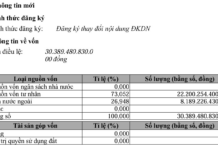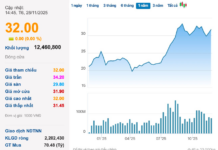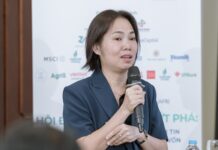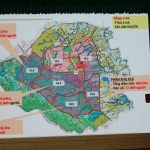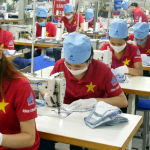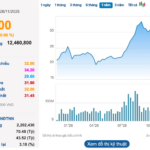Science and technology play a pivotal role in the Fourth Industrial Revolution and the digital economy, profoundly impacting the socio-economic landscape.
THE ROLE OF SCIENCE AND TECHNOLOGY
While having capital and labor can lead to growth, this is an outdated model for two reasons.
Firstly, capital and labor sources are limited. Accumulation is a prerequisite for investment, and investment directly determines growth rate. However, accumulation falls short of investment, and with a continuous budget deficit, domestic and foreign borrowing becomes necessary for investment. Labor force growth rates have declined over the decades, from around 3% to below 2% and, more recently, to just under 1%.
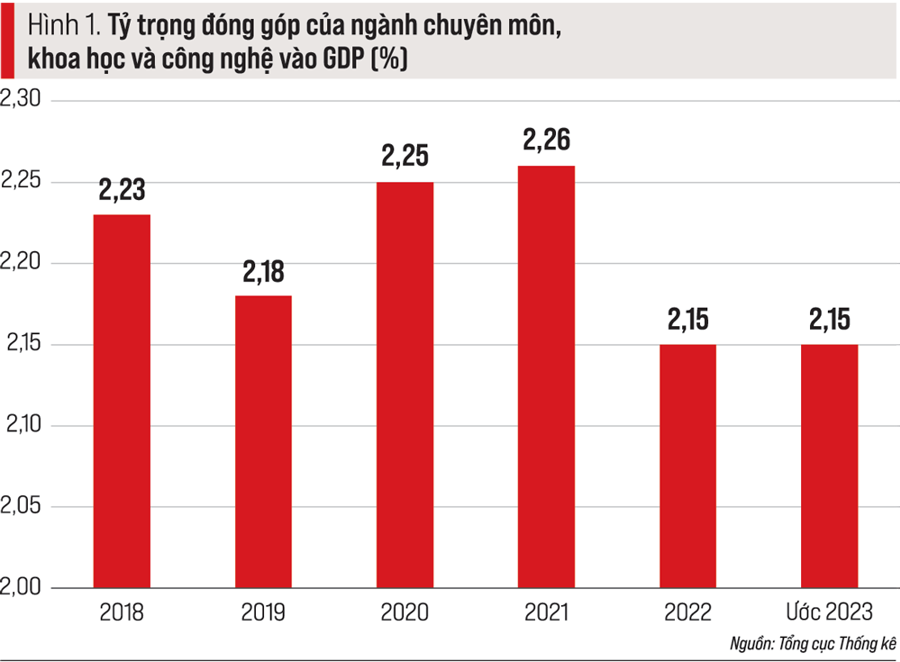
Additionally, tens of thousands of people are working abroad on long-term contracts annually, and Vietnam may need to import labor in the future, just as it currently imports labor from other countries. This is partly due to the increased demand for labor to meet the country’s development needs and the rapid transition from a “golden population structure” to an aging population, with declining birth rates, lower natural growth rates, and increased life expectancy.
Secondly, if growth relies solely on increased capital and labor, with low investment efficiency and labor productivity, it can lead to adverse effects such as inflation, public debt, foreign debt, bad debt, and a balance of payments deficit.
While growth rate is important, the quality of growth is even more crucial. It ensures not just maintaining the current growth rate but also achieving higher and more sustainable growth in the future. It’s time to adopt a new growth model that focuses not only on today’s gains but also on long-term growth sustainability.
To achieve high-quality growth, it is essential to improve investment efficiency, increase labor productivity, and enhance the contribution of total factor productivity (TFP) to GDP growth.
Investment efficiency is reflected in the ICOR (Incremental Capital-Output Ratio). A higher ICOR indicates lower investment efficiency, and a lower ICOR signifies higher efficiency. To improve investment efficiency, careful planning is necessary to avoid waste and loss, along with expediting construction.
Labor productivity is calculated by dividing GDP by the average number of employed people in a year. While the General Statistics Office of Vietnam calculates GDP in current prices, labor productivity in current prices is mainly used for comparisons between industries, provinces/cities, or for converting into GDP. However, the growth rates over the years are not published for comparisons between different periods. The growth rate and level of labor productivity depend on the structural shift of the labor force between industries, the proportion of trained workers, and the level of technical equipment and technology.
TFP’s contribution to GDP growth has been increasing, rising from less than 30% a decade ago to over 40%, with a target of 45% by 2025, making it the most significant factor among the three elements of growth: investment, labor, and TFP.
THE CURRENT STATE OF SCIENCE AND TECHNOLOGY
Figure 1 illustrates that the proportion of science and technology in GDP is relatively low, at just over 2.5%. If the professional sector is excluded, the proportion is even lower (the sector’s proportion is the 13th lowest among the 20 level-2 sectors). The growth rate of this sector is generally lower than the country’s overall growth rate (Figure 2).
Except for 2020 and 2021, when the sector’s growth rate exceeded the overall economic growth rate, in other years, it lagged (for example, 6.8% vs. 7.47% in 2018; 6.71% vs. 7.36% in 2019; and 6.21% vs. 8.02% in 2022).
Some recent indicators provide a more detailed picture of the state of scientific activity in Vietnam.
The number of people engaged in scientific research in recent years is as follows (Figure 3):
The number of people involved in scientific research has steadily increased over the years, reaching nearly 0.32% of the total employed population in 2021. However, the “density” of 3 researchers per 1,000 employed people is low, and it only accounts for approximately 2.7% of the total number of highly skilled technical workers. This “density” is extremely low.
The distribution of scientific researchers by sector of activity in recent years is shown below (Figure 4):
Based on the sector of scientific activity, several observations can be made:
Firstly, educational institutions, universities, and colleges account for the highest proportion, surpassing the combined total of the other four sectors. This highlights the importance of the education sector and the need for stronger connections between these institutions and organizations with research needs, such as administrative agencies, other public service organizations, non-governmental organizations, and businesses.
The remaining sectors, in descending order, are scientific research and technological development organizations, non-governmental organizations, businesses, administrative agencies, and other public service organizations.
Secondly, except for the scientific research and technological development sector, which has a decreasing proportion, the shares of the other sectors are increasing.
The distribution of scientific researchers by field of science and technology in recent years is as follows (Figure 5):
From the distribution by field of science and technology, several observations can be made:
Firstly, the highest proportion is in technical sciences and technology, which is essential and a common characteristic of developed countries.
Secondly, for a country with a transitioning economy and a strategic breakthrough in three areas (institutions, human resources, and infrastructure), the second-largest proportion in social sciences is also crucial. However, there are issues regarding the focus and timeliness of research in certain areas, such as the ambiguous definition of “bourgeoisie” in the context of private capital and private enterprises, the concept of a “socialist-oriented market economy,” and the criteria for an industrialized country or modern industry.
Thirdly, while the proportions of some fields are increasing as expected, others are decreasing, which requires attention. For example, the humanities field is declining, and there is a sense of degradation in this area. Additionally, the natural sciences field, which includes basic research, is also decreasing, possibly due to a lack of connection with the economy in a market mechanism.
In terms of the educational background of scientific researchers: The proportion of researchers with a university degree was the highest at 51.1% in 2015 but decreased to 36.9% in 2021. Meanwhile, the number of researchers with a master’s degree surpassed those with a university degree in 2021 (42%), becoming the most prominent group.
Regarding the funding for scientific research and technological development: According to statistics, the proportion of funding in GDP has increased over the years (0.36% in 2015, 0.41% in 2017, 0.42% in 2019, and 0.43% in 2021). However, it is still very low compared to the 10-year technical-technological renewal cycle of developed countries, which requires an annual depreciation of 10% for fixed asset renewal.
On the funding structure for scientific research and technological development: The proportion of funding from the state budget is low and decreasing. In 2015, it stood at 33%, but by 2021, it had dropped to 30.9%. Compared to the total budget expenditure, the figures are even lower, with 0.48% in 2015 and 0.6% in 2021.
Regarding the funding distribution for scientific research and technological development by field: Technical sciences and technology receive the highest proportion of funding, and this share is increasing (71.8% in 2015 and 75.4% in 2021). Funding for natural sciences decreased from 5% in 2015 to 3.4% in 2021. Although funding for social sciences increased, its proportion remained small (11.4% in 2015 and 13.1% in 2021). The proportions for other fields were small and declining. The lowest funding was allocated to the humanities, with only 0.8% in 2015 and a further decrease to 0.5% in 2021.
On the funding distribution by sector of activity: The business sector receives the highest proportion of funding and is increasing (63.6% in 2015 and 76% in 2021). This reflects the importance of human resources in businesses and their direct interest in this area. Scientific research and technological development organizations have the second-highest proportion (25.8% in 2015 and 14.8% in 2021). The shares of other sectors are small and decreasing. The lowest funding goes to administrative agencies and other public service organizations (1.5% in 2015 and 1.4% in 2021)…
This article was published in the special edition of Kinh tế 2023-2024: Vietnam & The World, released on March 6, 2024. Please refer to the following link for the full issue: https://postenp.phaha.vn/chi-tiet-toa-soan/tap-chi-kinh-te-viet-nam
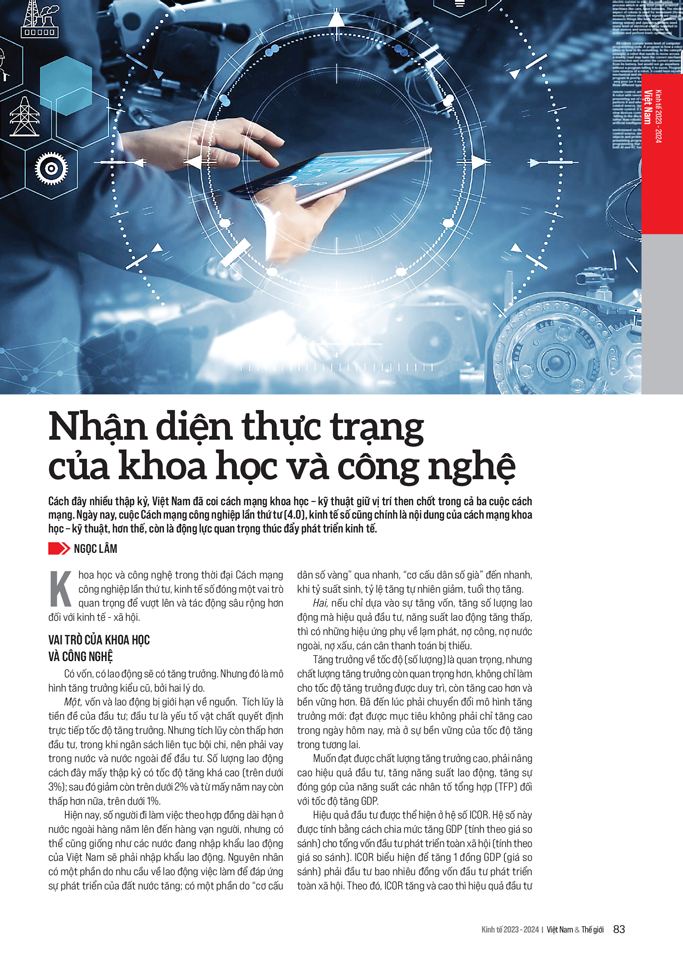
CEO Grants Lunar New Year Leave from 23rd of December: Labor productivity does not depend on the number of office days, how can they celebrate Tet if they only have 29 days off?
On 23rd December, employees at 1Office will have their last working day before embarking on a 12-day Tet holiday, while still receiving their full salary and bonuses. According to CEO Le Viet Thang, labor productivity does not depend on the number of days spent in the office, but rather on the concept of “sharing” benefits. By encouraging employees to work more without increasing their salary, no one wants to miss out…
CEO of Vingroup subsidiary shares about the challenge of “Pack it or Wrap it” and the journey towards 70 million transactions worth hundreds of million dollars
Hoang Nguyen bids farewell to Amazon Web Services Vietnam and joins Vingroup to tackle the challenge of providing hotel management solutions – a field he knows nothing about. His two-year software development plan is swiftly rejected by the Almighty. “Complete and deploy everything for Vinpeal in 20 months or pack your bags,” says his Vingroup boss.












